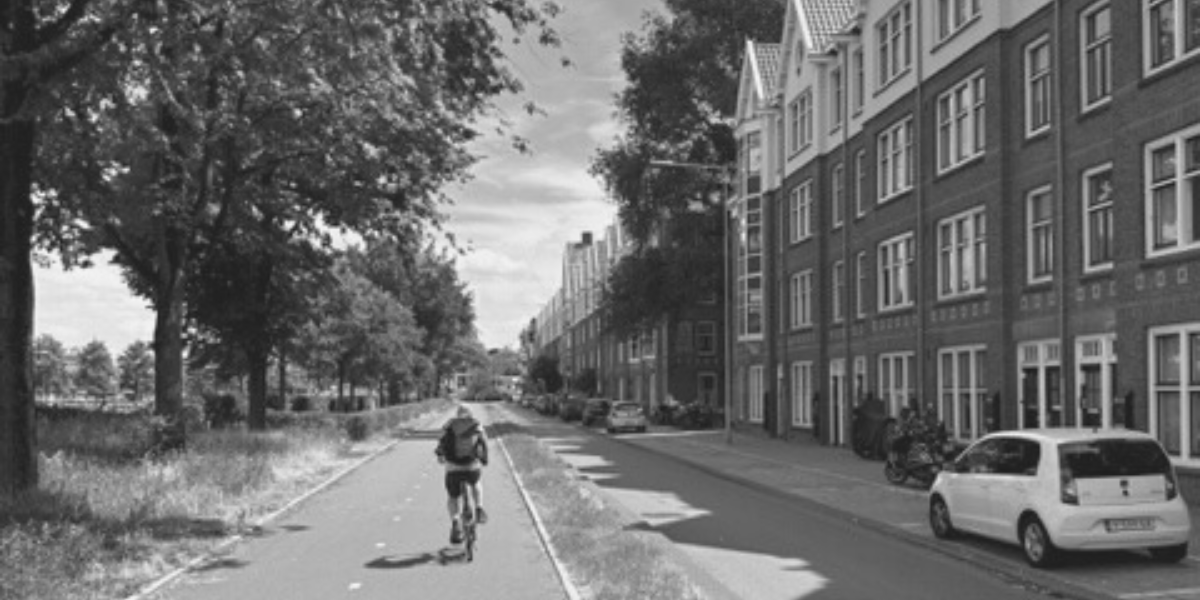As the executive director of the Open Mobility Foundation (OMF), I recently had the incredible opportunity to visit several international cities to exchange ideas and make new connections in the mobility ecosystem. My travels also allowed me to share the OMF’s story and showcase our latest work at conferences, workshops, and meetings with members, both public and non-public, as well as prospective members.
What struck me the most during these trips were the similarities among different cities and countries. Everywhere I went, I observed a common shift towards digital infrastructure and the adoption of tools like the OMF’s Mobility Data Specification (MDS) and Curb Data Specification (CDS) to manage mobility and public space in the digital era. Each city was also addressing the urgent challenges of climate change, aiming to reduce reliance on personal cars and promote sustainable transportation options. Additionally, the need to provide more housing options near job centers to reduce commutes and improve affordability was a shared concern. However, what made each city unique was its individual approach, tailored to its local context.
Here are some takeaways from each city I had the pleasure of visiting:
Brisbane, Australia
- A city in transition: As it prepares to host the Olympics in 2032, Brisbane is transforming from a laid-back country town to a bustling metropolis with excellent transportation options.
- Thriving micromobility: Brisbane is embracing micromobility with nearly 2 million scooter trips in the first half of this year, and they are efficiently managing multiple operators using MDS.
- Strong public transport: The city, in collaboration with the state, is expanding transit options, introducing contactless fare payment, and working towards better integration between micromobility and public transit.
- True MaaS: Queensland is running a successful Mobility as a Service (MaaS) scheme focused on the University of Queensland’s population, providing flexible subscriptions integrating public transport, micromobility, taxis, and car-share services.
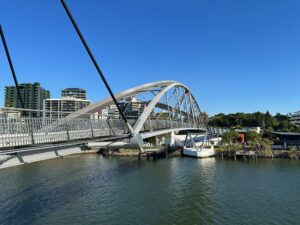
Brisbane, Australia does bike/pedestrian bridges right with two more currently under construction.
La Rochelle, France
- Best in France: La Rochelle, a medium-sized city on the west coast, is making significant progress in becoming the best city for cycling in France.
- Build it and they will come: The city’s focus on creating separated bike infrastructure has resulted in a growing number of cyclists.
- Managing public space: La Rochelle boldly closed a street on their main harbor to through traffic. They have the opportunity to maximize their efforts by using CDS to digitize rules and manage the delivery vehicles, buses and taxis competing for space.
- Form factor: Cargo bikes have become an excellent delivery solution, complementing La Rochelle’s expanding bike infrastructure and narrow historic streets.
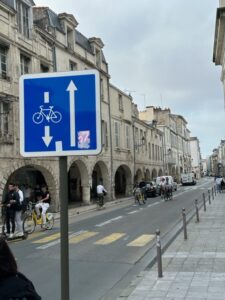
Prioritizing limited public space for bikes in La Rochelle, France.
Paris, France
- Scooter chaos?: Contrary to expectations based on recent press about Paris’s challenges with shared scooters and the public advisory vote to ban them, Paris has managed shared scooters better than many US and European cities.
- Creating a bike culture: While Paris has improved bike lanes and infrastructure, there is still work to be done to create a well-connected bike network.
- Autotopia: Despite cycling improvements, cars and mopeds still dominate Paris streets. New policies like cordon pricing or emission pricing zones could manage demand effectively.
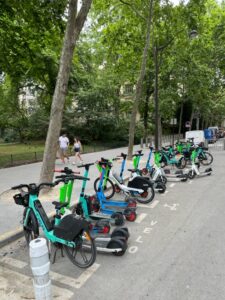
Micromobility parking in Paris, France.
London, UK
- Congestion pricing with a side of congestion: London’s congestion pricing scheme, though celebrated by advocates, has not completely resolved the issue of street congestion, impacting bus travel times and reliability.
- The call of the underground: The London Underground remains the most efficient way to get around the city, conveniently accessible with an Oyster Card or contactless payment card.
- Look right: While efforts to improve bike infrastructure are noticeable, pedestrian accessibility and safety should also be a priority.
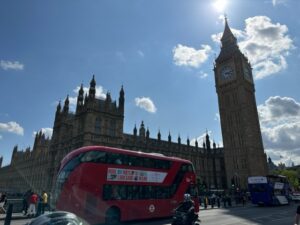
Traffic continues to be a slog in Central London, UK.
Amsterdam, Netherlands
- Still the gold standard: “I don’t know how to use the public transport system because I ride my bike everywhere.” is a common refrain heard across the city. Amsterdam still sets the benchmark for cycling, with over 60% of all trips made by bike and the brick red bike lanes serve as a constant reminder of this city’s priorities.
- Shared mobility: Amsterdam famously has not embraced shared scooters – and it doesn’t seem to be getting them down. Nonetheless, the city has a robust shared mobility system including bikes, mopeds, and a healthy car-share network, all while maintaining an exceptional public transport system. As they plan for the future, the city will be implementing MDS to manage their shared modes.
- Digitally managing public space: Amsterdam faces the challenge of managing an old city with new digital solutions, such as CDS, as delivery vehicles vie for limited space due to lower weight requirements.
- Managing speed: With e-bikes becoming more popular, Amsterdam is considering digitally regulating bike speeds in congested areas and near vulnerable users, like schools.
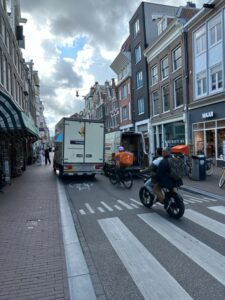
Demand for curb space in Amsterdam, Netherlands.
Working in the field of transportation, the human experience unites us all, as everyone relies on some form of transportation daily. While the unique richness of each city and its residents is far more complex than can be described in a few ‘takeaways’ by a visitor, there are far more commonalities than differences in how we move around. These international journeys reinforced the common challenges cities face, from integrating new shared mobility options to enhancing public space management. That’s precisely why the OMF continues to engage with our community of cities and private companies, working together to transform mobility in the modern era using well-designed open-source data standards like MDS and CDS. Our mission is to revolutionize transportation to create smarter, safer, and more sustainable cities for everyone, and together we are on our way.

